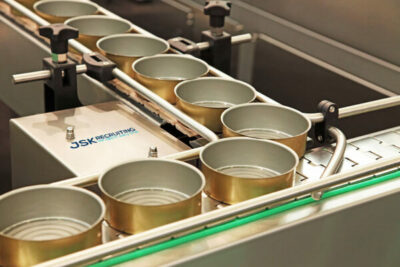Canned Packaged Goods: How Are They Made?
What do you know about canned packaged goods and how they are made? You can read about it here in this brief summary of the subject.
Have you seen Andy Warhol’s Campbell’s Soup Can, which was first exhibited in 1962? He sold 32 canvasses at that time, each of which had a different soup flavor. The first flavor for his pop art cans was tomato flavor which he sold in 1897.
Other than as a form of art, canned packaged goods are an important food staple for many families. Canned packaged goods are convenient, readily available, and easily transportable all year round. It’s important to understand how they are made and what makes them shelf-stable.
Canning preserves freshness and increases shelf life. Read on to learn more about the process and storage of canned products.
The Process
The basic process of how can goods are made has not changed too much since Nicolas Appert and Peter Durand developed the process during the French Revolution. In 1795, a reward of 12,000 francs was offered to anyone who could figure out how to keep food stored for longer. It took him 14 years of experimentation to develop the canning process.
The canning process depends on a heating treatment that destroys microorganisms and preserves the food. The food is heated under steam pressure at temperatures of 240-250° Fahrenheit. This method increases the shelf life of food as long as the can remains sealed.
Do Canned Packaged Goods Lose Nutrients?
Canned goods that are minimally processed offer similar nutrition to fresh and frozen goods. Fruits and vegetables are picked at peak ripeness and packed quickly, so they maintain their freshness.
You may lose some nutrients in the process of canning, like Vitamin C and B1, which are more heat sensitive. Once canned, the remaining vitamins will be protected while stored as long as the cans remain sealed.
Tin and aluminum provide a barrier against gas and light that protect the nutrients. There is a move towards more plastic packaging and containers, but canned goods continue to be a popular choice. Used cans are still the most recycled food packaging.
How Long Do Canned Goods Last?
Provided the products are treated by heat under tightly controlled conditions, canned products can last a long time. There are some concerns to keep in mind, for example, where the tin itself rusts over time, making the food inedible. Certain high-acid foods like tomatoes continually react with the container and will lose nutritional value over time.
Canned goods storage is an important consideration as there is an increased risk that the product gets spoiled if they are kept in a place subject to high temperatures. If the can is dented, it should not damage the product. Unfortunately, there’s no real way to confirm if the damage hasn’t impacted the product, so you should take extra care.
Learn More About Food Manufacturing
Canned packaged goods are one of the safest forms of packaging and are tamper-proof. The airtight seals keep the food nutritious and safe for a long time. In a zombie apocalypse, your canned goods will be as important as toilet paper.
Knowing how they are made and stored is important for anyone in the food industry. If you’re interested in manufacturing food, JSK recruiting is here to help. Contact us today to find your next job opportunity.


